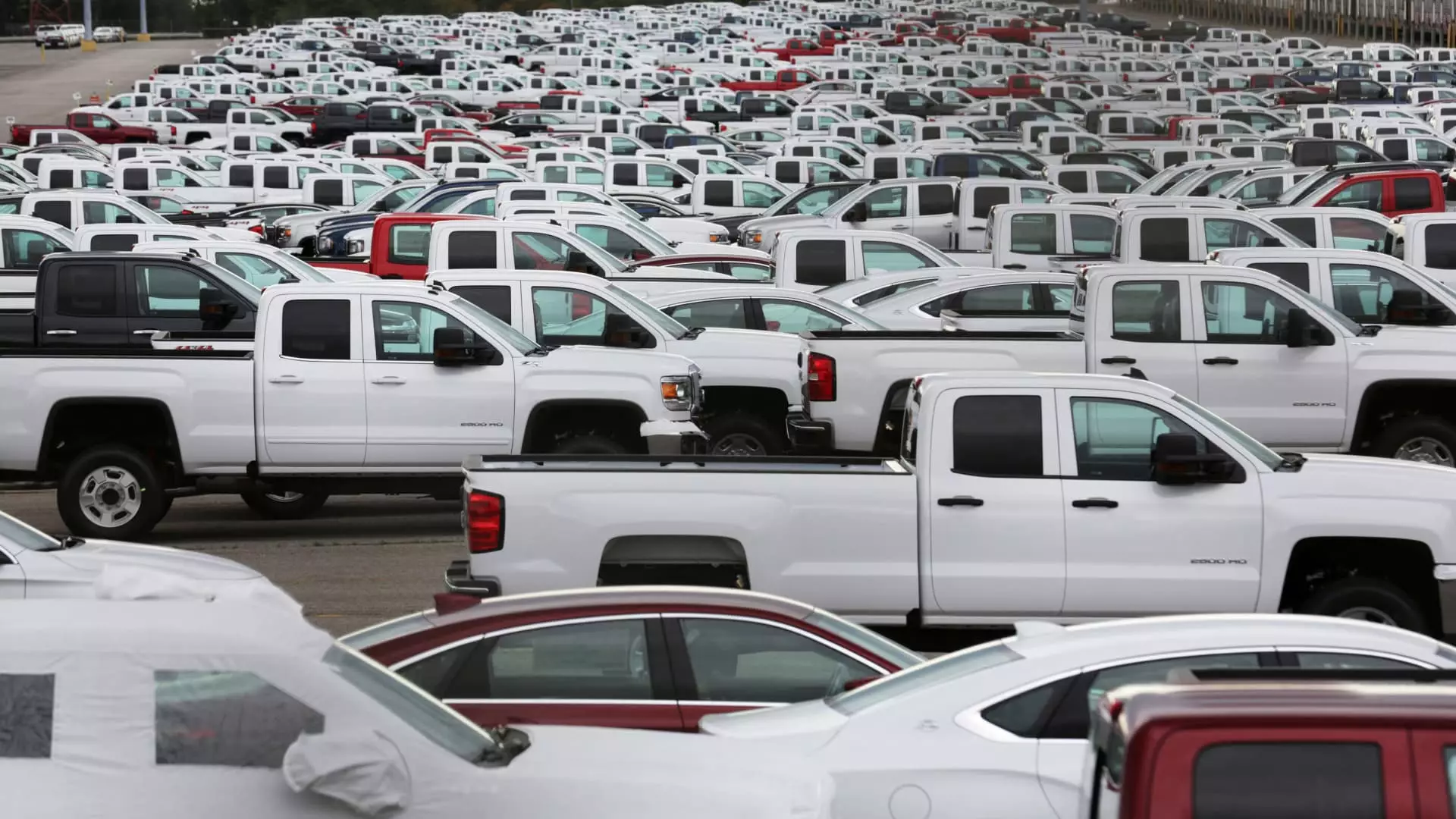The recent announcement from the Trump administration to impose a sweeping 25% tariff on all automobiles not manufactured in the United States has sent shockwaves through the auto industry. General Motors (GM), with its considerable dependency on imported vehicles, took a significant blow as its stock plunged nearly 7% during early trading. This fallout starkly contrasts the reactions of competitors like Ford and Stellantis, which both faced a comparatively milder dip of about 2%. While Tesla enjoyed an uptick of over 1%, the noticeable disparity raises questions about the long-term viability of GM in an increasingly protectionist environment.
This tumultuous shift is not merely a momentary market reaction; rather, it signals deeper issues rooted in GM’s operational structure and strategic decisions. The company’s heavy reliance on assembly plants in Mexico renders it particularly vulnerable to tariffs that could fundamentally alter its supply chain dynamics.
Understanding the Tariff Landscape
President Trump’s executive order aims to bolster American manufacturing by tightening the screws on imports. However, amidst the rhetoric surrounding patriotism and economic nationalism, the impact on actual market dynamics is more complex. The tariffs serve as a double-edged sword; while they may shield some American manufacturers, they also threaten to inflate prices on vehicles sold to consumers. This conundrum places GM in a precarious position, given that approximately 30% of its vehicles are assembled outside U.S. borders, primarily in Mexico and Canada.
According to analysts from Deutsche Bank, GM’s operational strategy is equipped with one glaring flaw: its pronounced exposure to Mexico. As if that weren’t enough, GM’s fierce competitors—Tesla and Ford—seem more insulated from the tariff implications thanks to strategic positioning of manufacturing facilities. The difference in stock performance is evident, illustrating how reliance on international supply chains could spell disaster for GM’s bottom line.
A Closer Look at Production Dynamics
Examining the data reveals that GM completed only about 52% of its U.S. vehicle assembly domestically during the first three quarters of 2024. Interestingly enough, Stellantis and Ford fared better, with 57% and a whopping 78% of their vehicles assembled within the U.S., respectively. This variance prompts a critical reconsideration of GM’s operational model. Analysts from Barclays and Wolfe Research indicate that GM merely skirts the threshold of sustainability in its production strategy and may be forced to reconsider its reliance on foreign assembly, particularly as tariffs mount.
The implications of this strategic misalignment are both immediate and long-term. John Murphy of Bank of America warns that GM may find itself in a relative state of disarray compared to its competitors. This vulnerability is accentuated by the fact that approximately 15% of GM’s U.S. vehicles derive from South Korea, complicating the landscape further and pulling tighter the noose that the recent tariffs have placed around its operations.
Consumer Impact: Will Prices Rise?
While the boardrooms of the auto industry strategize and reposition amid tariff uncertainties, the real question pervading everyday discussions centers on consumer impact. If GM finds itself compelled to increase prices to maintain margins against tariff-drenched imports, the burden will inevitably fall on the consumer. This could drive prices of American-made vehicles upward during a time when consumers are already feeling the squeeze from inflation across other sectors.
The political rhetoric around manufacturing seems to ignore the fundamental truth: higher prices lead to decreased demand. Consumers have choices, and if imported vehicles become more economically viable, GM could find itself sidelined in an already congested market.
Future Considerations and Strategic Moves
As the tariff landscape shifts, GM has no choice but to contemplate strategic measures to fortify its position. Drastic alterations, including rebalancing its supply chain, fortifying domestic assembly, or even reevaluating its product offerings, may be necessary to weather this storm. The traditional belief that the auto industry can absorb external shocks is being dismantled as structural pressures mount.
Inciting a level of introspection about its future, GM needs to reconcile its legacy as an American stalwart of automotive innovation with the demands of a rapidly changing market landscape. In a world where consumer preferences are shifting toward sustainability and cost-effectiveness, only a robust response encompassing innovative practices can hope to stave off the looming crisis that the 25% tariff threat poses.

